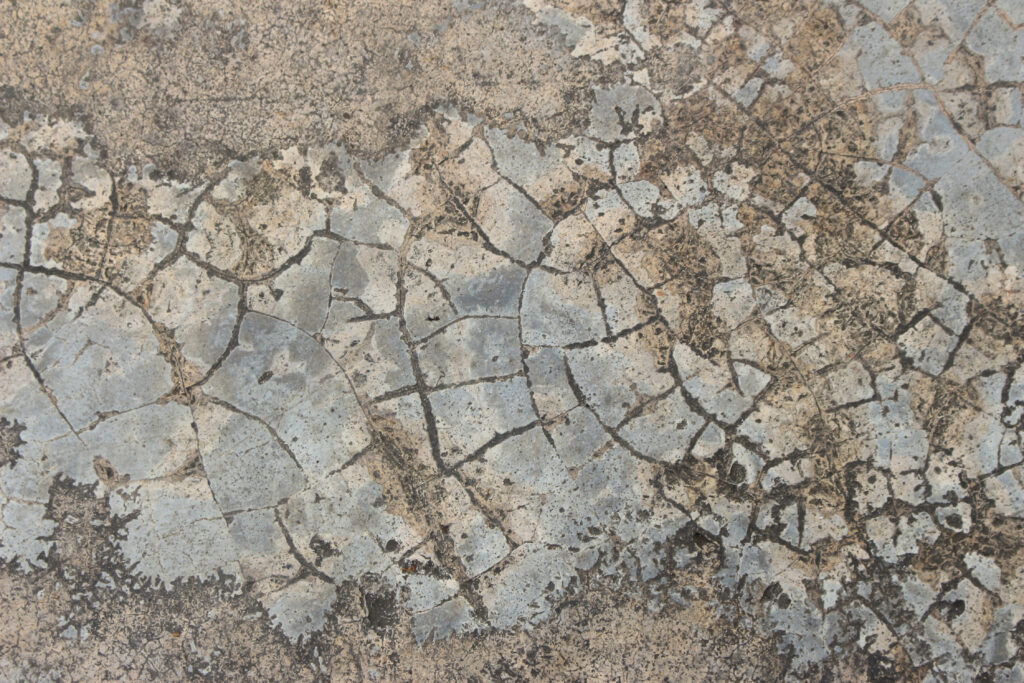
Why Concrete Cracks and How to Prevent It
Concrete is known for its strength and durability, but if you’ve ever seen a cracked driveway or patio, you know it’s not invincible. Cracks in concrete aren’t just an eyesore—they can also be a sign of deeper issues that could affect the structure’s longevity. At IC Solutions, we’ve seen it all, and we’re here to share what causes those cracks and how to stop them before they start. If you’re looking for smart, practical strategies, this is your go-to guide for preventing cracks in concrete.
What Causes Concrete to Crack?
Cracks in concrete can appear for a number of reasons. Some are natural and minor, while others are avoidable with proper planning and installation. Here are the most common causes we see in the field:
1. Shrinkage During Drying
As concrete dries, it shrinks. This is a normal part of the curing process, but if the mix isn’t balanced correctly or it dries too quickly, the surface can crack. Most shrinkage cracks appear in the first few days after pouring and are often due to water evaporating too fast.
2. Temperature Changes
Concrete expands when it’s hot and contracts when it’s cold. If there’s no room for movement, the stress from expansion or contraction can cause it to crack. This is especially true in climates with big swings between summer and winter temperatures.
3. Overloading the Surface
Concrete is strong—but like anything, it has its limits. Putting too much weight on a surface that wasn’t designed for it (like parking a heavy truck on a residential driveway) can cause it to crack under pressure.
4. Improper Base Preparation
If the ground under the concrete isn’t properly compacted, it can settle unevenly over time. This causes sections of the concrete to shift or sink, leading to visible cracks and an unstable surface.
5. Lack of Control Joints
Control joints are intentional weak points added to concrete slabs to guide where cracks will form. Without them, concrete can crack in unpredictable and often unsightly ways.
How to Prevent Cracks in Concrete
Now that we know what causes cracking, let’s look at how to stop it. Prevention starts well before the first pour and continues after the concrete is in place. Here are some proven strategies we use at IC Solutions to keep your concrete looking sharp and holding strong.
1. Use the Right Mix
Getting the right water-to-cement ratio is crucial. Too much water makes the mix easier to pour, but also weakens the concrete and increases shrinkage. Using admixtures and high-quality aggregates can also improve durability and reduce cracking risk.
2. Prep the Base Properly
A solid foundation is everything. We always compact and level the subgrade to prevent future movement. If necessary, a layer of crushed stone or gravel is added to promote drainage and support.
3. Install Control Joints
Control joints help manage cracking by giving the concrete a controlled place to crack as it dries and settles. These joints should be cut or formed at specific intervals and depths based on the size of the slab. We follow best practices recommended by the American Concrete Institute to ensure precision.
4. Cure the Concrete Correctly
Curing is just as important as pouring. Keeping the surface moist and protected for at least 7 days helps the concrete reach its full strength and reduces the chance of surface cracks. Methods like misting, covering with wet burlap, or applying a curing compound all work well.
5. Plan for the Load
Before any concrete is poured, we assess what kind of weight it will need to support. That determines the slab thickness, reinforcement, and mix design. Whether it’s foot traffic or forklifts, we make sure your concrete is built to handle the load.
What to Do if Cracks Appear
Even with the best planning, some cracks are inevitable. The good news? Not all cracks are bad. Hairline cracks often appear as concrete cures and aren’t a structural concern. But larger, wider, or growing cracks could signal a bigger issue.
If you notice a crack, take note of its size and location. If it’s wide enough to fit a coin or it keeps spreading, it’s time to get it checked. At IC Solutions, we offer professional assessments and repair strategies that can extend the life of your concrete without a full replacement.
Is Cracking Ever a Sign of Concrete Failure?
Sometimes. Cracking alone doesn’t always mean the concrete is failing—but when cracks are deep, diagonal, or paired with visible movement or crumbling, they could indicate structural damage. In those cases, immediate evaluation is critical to avoid bigger problems down the line.
Long-Term Maintenance Tips
Keeping concrete strong isn’t just about the initial pour—it’s also about long-term care. Sealing the surface regularly can protect it from water and chemical damage. Avoiding heavy impact and excessive de-icing salts also goes a long way. Regular inspections can catch small issues before they grow.
Build Stronger with IC Solutions
Concrete might crack—but it doesn’t have to if you take the right steps. Understanding why it happens and how to prevent it is the first move toward smarter, longer-lasting construction. At IC Solutions, we combine expert knowledge, top-tier materials, and precise planning to help our clients get concrete results—without the cracks.
Whether you’re planning a residential walkway or a large commercial slab, we’ve got the know-how to make it last. Don’t wait for cracks to show—get in touch with IC Solutions today and make sure your next concrete project stands the test of time.
If you are interested in getting any concrete work done on your property or want to learn more about the importance of getting high quality concrete poured on your property, click here for a short article on the topic.
